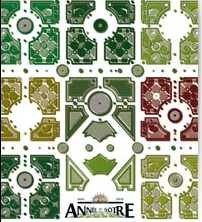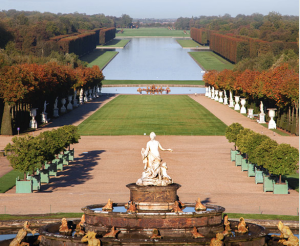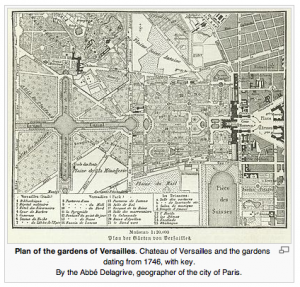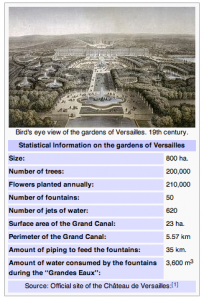Year of Le Notre
A year to celebrate Le Notre – 2013 marks 400 years since the birth of Andre Le Notre, the French landscaper who created the gardens of Versailles and whose influence on urban planners and landscape architects continues to this day. In his honor, the Palace of Versailles has organized a year of exhibits, restoration of the Latona fountain and other structures, and many celebratory events. This is the place to learn about them all. There’s even a mobile app.
You’ll find information on the gardens and the buildings within them, including slide shows of the Palace, the Gardens, the Grand Trianon, and Marie Antoinette’s estate. The History page gives you a feel for life in the Palace and background information on Le Notre and many of the architects who designed the Palace buildings, as well as cabinet makers, sculptors, and painters.
Optics, perspective (his use of anamorphosis and collimation are mentioned in this NPR story), and extensive and sophisticated hydraulic engineering are just a few of the tools Le Notre used. Water supply was a huge issue for the many fountains and canals in the gardens. Here’s Wikipedia on the Machine de Marly, a major source of water:
The Machine de Marly was designed to lift water from the Seine in three stages to the Louveciennes Aqueduct some 100 metres above the level of the river. A series of huge waterwheels was constructed in the river, which raised the water via a system of 64 pumps to a reservoir 48 metres above the river. From this first reservoir, water was raised an additional 56 metres to a second reservoir by a system of 79 pumps. Finally, 78 additional pumps raised the water to the aqueduct, which carried the water to Versailles and Marly. …
During Louis XIV’s reign, water supply systems represented one-third of the building costs of Versailles. Even with the additional output from the Machine de Marly, fountains in the garden could only be run à l’ordinaire – which is to say at half-pressure. With this measure of economy, fountains still consumed 12,800 m3 of water per day, far above the capacity of the existing supplies. In the case of the ‘‘Grandes Eaux’’ – when all the fountains played to their maximum – more than 10,000 m3 of water was needed for one afternoon’s display.
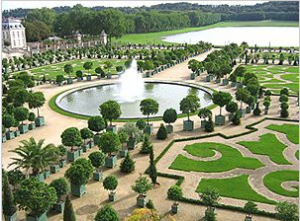
So what makes a Le Notre garden so distinctive? To understand that it helps to know what a parterre is – “A parterre is the open, flat part of a formal garden, consisting of lawns or planting beds divided by gravel paths and edged with stone or tightly-clipped hedging” and what a bosquet is – a wooded area, sometimes with trees planted in patterns to create optical effects. Here’s garden historian Frederic Sichet describing the experience of walking in a Le Notre garden:
He had a great talent for assembling different elements. In a Le Nôtre garden you have spaces which lead on, one from another; it’s not just a parterre and bosquets, it’s often, a multitude of parterres that link up – ones in front of the château, then lateral ones; and with a system of terraces you access a second level of parterres, then you get to the first bosquets… it’s very impressive; you never get bored.
When you make the effort to walk in one, you realise that it’s not designed to just look at from one viewpoint; there’s an immense variety, with things that are hidden and only appear later in the walk, there are steps leading to different levels, it’s not flat and boring. There may be wide central axes – at Chantilly it crosses the whole estate – but the garden is not just about that, there are lots of transversal ones which make you want to go and discover what’s on the sides.
Most images from Wikipedia article, Gardens of Versailles.

